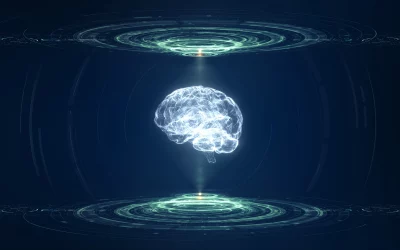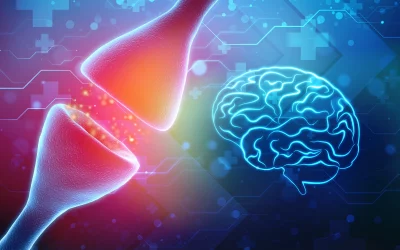PERSONAL INJURY LAW FIRM IN COLORADO SPRINGS
The link between post-traumatic headaches and car accidents, along with the incidence of brain damage has long been suspected, but the link has now been shown scientifically. According to a survey published by the American Council for Headache Education, approximately 450,000 new instances of persistent post-traumatic headaches, or PTH, are diagnosed each year in the United States.
If you are suffering migraine headaches or various other injury symptoms following a car accident in Colorado Springs, you deserve a free consultation with a personal injury attorney from a trusted car accident law firm.
post-traumatic headachesTHE BASICS OF POST-TRAUMATIC HEADACHES
Traumatic brain injuries affect almost 1.7 million people in the United States each year, and they have a major effect on the lives of patients and their families1. The most frequent complaint is headache, which may come after minor, moderate, or severe damage.
When you suffer head pain, it may very well be whiplash headaches from the motor vehicle collision. Experiencing a headache after a car accident is very common, second only to back pain. Neck pain is also correlated about headaches after a car accident. When head injuries are severe, the victim will suffer migraine headaches. If this is you, then you need to focus on getting medical attention.
Car accident victims routinely go without the proper medical care and set themselves up for a lifetime of serious pain and suffering. The insurance company will not pay a fair settlement if you do not seek medical care. The last thing you want is to experience headache symptoms such as visual disturbance, stiff neck memory loss, light sensitivity, damage to the spinal nerves, emotional symptoms, and other common head injuries. only to not receive fair compensation for the injuries sustained.
WHAT IS POST-TRAUMATIC HEADACHE, AND HOW DOES IT AFFECT YOU?
The International Headache Society defines post-traumatic headache (PTH) as “a headache that develops within seven days of the injury or after regaining consciousness.”
There are several types of headaches, but the most common ones resemble migraine (moderate to severe intensity, pulsating, associated nausea/vomiting or light/sound sensitivity, worsened with routine activity) and tension-type headache (moderate to severe intensity, pulsating, associated nausea/vomiting or light/sound sensitivity, worsened with routine activity) (mild to moderate in intensity, non-pulsating headache after a car accident with either light or sound sensitivity but no nausea or vomiting).
Dizziness, sleeplessness, poor concentration, memory issues, sensitivity to loud or bright lights, exhaustion, and mood and personality changes such as sadness and anxiety are prevalent symptoms of PTH.
According to many studies, the headache normally goes away after three months, although it may remain longer in 18-65 percent of instances, referred to as persistent post-traumatic headaches. Pre- existing headache, being female and having a family history of migraine are all variables that may raise the likelihood of chronic post-traumatic headaches. Patients with moderate head trauma might suffer for months or years. Thus severe head trauma does not always result in long-term headaches.
PTH is seen in 90% of people who have had a traumatic brain injury (TBI), and it seems to be more prevalent and dangerous in moderate TBIs than in severe closed head injuries. In many circumstances, people who do not lose consciousness have the greatest rate of headaches.
CURRENTLY, THERE IS ONLY FLIMSY EVIDENCE TO EXPLAIN THIS PHENOMENON
According to studies, the number of patients suffering from PTH reduces with time; nonetheless, around 25% of sufferers have recurrent headaches for up to four years. Unfortunately, many individuals with a mild traumatic brain injury seem to be well but suffer from persistent PTH, and other post-concussion symptoms are often missed. PTH is the most disabling symptom following a mild traumatic brain injury, resulting in depression, personality changes, and long-term impairment.
PTH causes excruciating symptoms owing to chronic muscular contractions in the neck and scalp. A secondary form is marked by vascular fluctuations that might result in a vascular headache after a car accident that pulsates at times. Aching, throbbing, hammering, pressurizing, squeezing, stabbing, and/or expanding pain are symptoms of PTH. The pain is usually widespread, which means it affects the whole head, including the neck.
Physical therapy is an effective treatment for PTH. Massage, cervical traction, and strengthening of the neck musculature effectively reduce the painful muscle spasms that cause PTH.
Beta-blockers, antidepressants, calcium channel blockers, anti-seizure medicines, serotonin antagonists, and intravenous DHE are some medications used to treat the condition. A topical anesthetic (usually lidocaine) mixed with a corticosteroid (i.e., dexamethasone) may also relieve short-term pain by blocking the occipital nerve.
Despite the above-mentioned therapeutic methods, many patients will continue to be disabled and in pain as a result of PTH. Botox injections into the frontalis muscle and other pericrania muscles have been shown to significantly reduce PTH symptoms in these individuals. Even though this is an off-label usage of the medicine, it is safe and helpful in a small number of individuals with chronic PTH.
Suppose you’ve had a brain injury or TBI and are now experiencing the incapacitating symptoms of PTH. In that case, it’s critical that you talk to your doctor, record your symptoms, and develop a personalized treatment plan that improves your quality of life. The injury lawyers at Warrior Car Accident Lawyers, are well-versed in resolving cases including post-traumatic headaches.
WHAT CAUSES PTH AND HOW CAN WE FIND OUT MORE ABOUT IT?
PTH’s etiology is unknown. However, it may be linked to the release of particular chemicals, swelling of crucial brain structures, or even brain atrophy. Aside from a thorough history and neurologic examination, most individuals with moderate post-traumatic headaches do not need comprehensive testing. A CT or MRI scan may be used to rule out a brain bleed in more serious injuries.
WHAT IS THE BEST WAY TO TREAT POST-TRAUMATIC HEADACHE?
Patients who have suffered a head injury may have trouble completing everyday tasks, miss school or work, and have a reduced quality of life. The ideal strategy is to look at all elements of the patient’s symptoms. The most effective therapy for PTH is medication, and the kind of headache after a car accident will determine the treatment.
In the first few weeks, several drugs are utilized, such as anti-inflammatories or pain relievers, especially migraine medications (triptans). If the headache continues and is moderate to severe, prophylactic medication may be explored, particularly to avoid a rebound headache (over-using pain medicines). Antidepressants, blood pressure meds, and anti-seizure medications are the most often used post-traumatic headaches preventatives.
POST-TRAUMATIC HEADACHE TREATMENTS THAT AREN’T DRUGS
Physical therapy, biofeedback/relaxation therapy, nerve stimulators, and cognitive-behavioral therapies are examples of non-drug treatments.
PTH education is an essential aspect of the management process. Psychological assistance is essential since psychological difficulties may cause headaches, and chronic headaches can worsen emotional problems.
References
Headache Medicine Fellow Ana Marissa Lagman-Bartolome, MD, Department of Pediatric Neurology, Hospital for Sick Children and Women’s College Hospital, University of Toronto, Toronto, Ontario, Canada.
The American Headache Society’s New Investigator and Trainee Section This page was last modified on November 4, 2013.
MIGRAINE WITH POST-TRAUMATIC STRESS DISORDER (PTSD) EPIDEMIOLOGY AND DEFINITION:
Trauma that causes emotions of great dread, helplessness, and terror may lead to PTSD. Emotional re-experience of the accident, numbing of emotions, avoidance of event-related stimuli, and heightened arousal are all part of the individual’s reaction. PTSD has a 12-month incidence rate of about 3.5 percent and a lifetime prevalence rate of 6.8 percent. 1
Multiple cohorts have demonstrated that persons who suffer from migraine have a higher incidence of PTSD.
Among one general population research, migraineurs had a 12-month PTSD prevalence rate of 14.3 percent and a lifetime PTSD prevalence rate of 21.5 percent, compared to 2.1 percent (12-month) and 4.5 percent (lifetime) in non-migraine sufferers.
Furthermore, among episodic migraineurs, the 12-month and lifetime chances of PTSD were found to be larger or equivalent to the risks of severe depression or generalized anxiety (Figure 1). In over 70% of patients with migraine and PTSD, PTSD symptoms came before migraine symptoms.
MIGRAINEURS REPORT ALMOST TWICE AS MANY STRESSFUL STIMULI AS NON-MIGRAINEURS.
Learning about a close family member or friend who was injured or murdered, unexpected injury/auto accident, seeing someone being hurt/killed, and violent assaults were among the most frequent traumatic life experiences (TLE) mentioned in one headache study. A second clinic trial of over 600 migraineurs confirmed these results, with the most prevalent TLEs being natural disasters, abrupt, violent death, conflict, and transportation accidents.
MIGRAINE AND PTSD: POSSIBLE MECHANISMS
There are several possible explanations underlying the link between PTSD and migraines. The central monoaminergic system and the hypothalamic-pituitary-adrenal (HPA) axis are two possible pathways. Anxiety or depression screenings are insufficient for detecting PTSD.
PTSD may be detected with simple inquiries about reliving a horrific experience in the past, with positive responses requiring additional investigation. The Life Event Checklist with the validated questionnaire: the PTSD Checklist may also test for PTSD (PCL). Finally, the Primary Care PTSD Screen (PC-PTSD) is a shorter screener that may be used. Positive results on the PCL or PC-PTSD need additional investigation.
PTSD DISABILITIES AND TREATMENT
PTSD has a detrimental effect on chronic pain sufferers’ impairment, and migraineurs with PTSD have a higher level of disability than migraineurs without PTSD.
While selective serotonin reuptake inhibitors (SSRIs) have the most evidence for effectiveness for PTSD (alone), they have no or little benefit for migraine. Amitriptyline and venlafaxine are two medications to consider if you have PTSD with migraines.
Amitriptyline has been proven to help with PTSD in at least three minor clinical studies, and it is often used to treat migraines.
Venlafaxine has also been shown to be beneficial in treating PTSD and may be useful in the prevention of migraines.
Finally, behavioral therapy alone may help people with PTSD manage persistent pain and impairment. Thus, in migraineurs with PTSD, cognitive/behavioral treatment, either alone or in conjunction with pinjuryaceutical therapy.
WHAT IS THE DIFFERENCE BETWEEN POST-TRAUMATIC AND “REGULAR” HEADACHES?
Diagnostic criteria for post-traumatic headache are included in the International Classification of Headache Disorders (ICHD). Post-traumatic headaches have “no conventional features,” according to the ICHD. They must also happen within seven days of the injury or regain consciousness.
Acute headaches usually last three months or less. Chronic headaches are those that last three months or more. The idea that headaches must appear within a week following an injury may not be accurate. Some people seem to acquire PTH later than others.
In Walker’s research, nearly a quarter of the patients who did not have headaches right after traumatic brain injury they developed “delayed onset” headaches six months later. The data for how the symptoms and prognosis of post-traumatic headaches vary from ordinary headaches is still lacking. This is an active research area.
TBI incidence rates by Service, active component, US Armed Forces, as determined by the DoD surveillance case definition, July 1999-June 2009.
It is reprinted with permission from Medical Surveillance Monthly Report, December 2009, Vol 16, No 12.
There were no migraines before deployment. Pre-deployment migraine
MIGRAINE AND POST-TRAUMATIC STRESS DISORDER
Maltreatment, abuse, or violence as a child may contribute to post-traumatic stress disorder (PTSD) later in life. PTSD is a disorder that develops when a person is exposed to an experience that causes acute dread, helplessness, or terror. There are several traumatic stresses.
Natural calamities and transportation Accidents are examples of this. Physical and sexual assault, such as rape and exposure to war or conflict, are others. Learning about a tragic accident or a loved one’s violent death may potentially trigger PTSD. The following are the main symptoms of PTSD:
Reliving the traumatic event through flashbacks or nightmares. Avoid reminders of the trauma.
Increased anxiety and emotional arousal, such as feeling irritable, jumpy, or easily startled. Feeling emotionally “numb” or detached from others.
Other signs and symptoms include feeling furious, guilty, or despairing and body aches and pains, such as a headache.
PTSD and migraine have been linked in studies. About 10% of the overall population suffers from PTSD. In a headache clinic, around a quarter of the patients have it. About half of the combat veteran clinic patients suffer from headaches.
Nearly 60% of those with PTSD and migraines said physical or sexual abuse was the culprit in one research. Migraine is exacerbated by the presence of PTSD, which is unsurprising.
Headache frequency and headache-related impairment are higher in migraine sufferers than in non-migraine sufferers.
In a study on the PTSD-migraine link, men with migraine were three times more likely to have PTSD than women with migraine.
PTSD TREATMENT
The mechanism that connects migraine with PTSD is unknown. The autonomic (or “automatic”) nervous system may be affected by PTSD. This section of the neurological system controls the “fight or flight” response. This is the body’s natural defense mechanism in the face of danger.
The hypothalamus, pituitary, and adrenal glands are in charge of it. The “fight or flight” reaction may be countered using relaxation techniques. They activate the parasympathetic nerve system, which is in charge of the “relaxation response.”
Deep breathing or concentrating on a nice picture or recollection may frequently trigger the relaxation response. The corpus callosum, a bundle of nerve fibers that connects the right and left sides of the brain, is similarly affected by PTSD. The corpus callosum decreases in PTSD.
The strongest evidence for addressing the consequences of PTSD and abuse is cognitive- behavioral therapy (CBT). CBT may be beneficial during and soon after a stressful event and years afterward to assist with the aftereffects. Adults, children, the elderly, and those with disabilities may all benefit from CBT.
There are various kinds of CBT, all of which have solid evidence to support its efficacy in treating PTSD. Identifying and controlling painful trauma-related thoughts and deviant thinking patterns is part of cognitive therapy. The goal of exposure treatment is to reduce the fear associated with traumatic events.
This is accomplished by a combination of recurrent conflict and relaxation. This might be for locations, events, memories, emotions, and feelings you are afraid of. Stress inoculation treatment entails learning how to cope with stress and anxiety.
Deep breathing, muscular relaxation, assertiveness training, role-playing, mind pausing, and positive thinking are examples of talents. A person concentrates on emotionally unpleasant information in eye movement desensitization and resensitization (EMDR) treatment. They concentrate on an external stimulus at the same time. Typically, this takes the form of eye movements, hand tapping, or noises.
Dialectic behavior therapy (DBT) is particularly beneficial for persons who suffer from self-inuring behaviors. Self-cutting is one of the behaviors, as are suicidal thoughts or acts. DBT may also help those who are making risky or harmful life choices. DBT integrates CBT’s core ideas with relaxation training, mindfulness meditation, and other well-established therapies.
See the suggestions below for assistance locating a mental health professional who employs these techniques. Learning and practicing relaxation methods such as deep breathing, meditation, and visual imagery may help everyone. There are a variety of materials accessible, including workbooks and self-guided audio recordings.
Medication’s significance in the treatment of PTSD is less well established. Antidepressants known as selective serotonin reuptake inhibitors (SSRIs) are a class of drugs. They’re often recommended for PTSD, although their effectiveness is debatable.
According to animal studies, treatment with SSRIs may reverse some of the effects of maltreatment on the stress response. Beta-blockers (e.g., propranolol), Prazosin, and Ketamine are some of the other drugs now being researched to treat PTSD. Benzodiazepines, such as Valium, Ativan, or Xanax, are not suggested since they are ineffective in treating PTSD and addictive.
The Warrior Car Accident Lawyers is a well-known Colorado Springs personal injury law practice that represents Colorado accident victims statewide who have been physically wounded due to another person’s or company’s carelessness.
Warrior Car Accident Lawyers
1902 W. Colorado Ave., Suite 100
Colorado Springs, CO 80904












